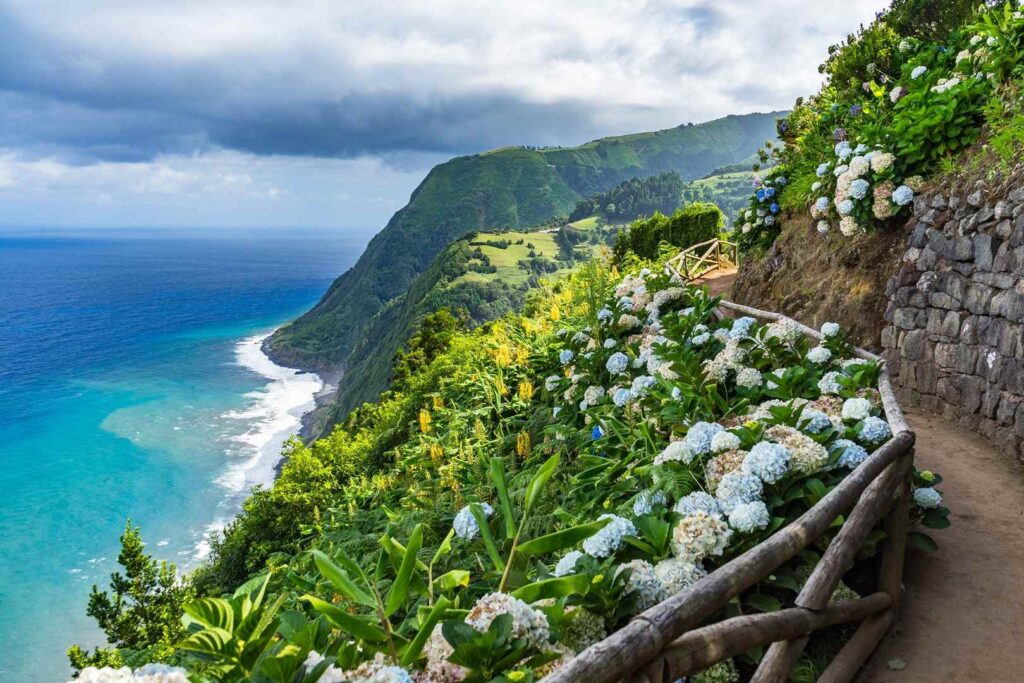São Miguel, Azores – Travel Tips
Category
Categories
Popular Articles

**Overview of the Destination:**
São Miguel is the largest and most populous island in the Portuguese archipelago of the Azores and is known as “The Green Island” because of its lush and verdant terrain. Famous for its geo-thermal hot springs, stunning crater lakes, and volcanic landscapes, São Miguel is a paradise for nature lovers. This UNESCO Global Geopark destination is filled with breathtaking sights and rich experiences, which makes São Miguel a must-visit for those who crave a tranquil escape and authentic adventures.
**Best Time to Visit:**
The Azores have a unique microclimate that sees mild conditions year-round, making any time a good time to visit. However, the best time to visit São Miguel is from June to September, when the temperatures average around 22-26°C. May and October can also be pleasant with fewer tourist crowds, though you might experience some rain showers. If you’re interested in attending major local festivals, plan your visit in July for the “Festas do Senhor Santo Cristo” or in August for the “Semana do Mar” sea week.
**Climate & What to Pack:**
Blessed with a moderate maritime climate, São Miguel experiences mild and stable temperatures throughout the year. The average highs hover around 20-25°C in summer and 14-17°C in the winter. Rainfall is common, especially in the winter months.
Considering the changeable weather, pack layerable clothes, a waterproof jacket, comfortable hiking shoes, swimwear, and a hat. Also, don’t forget sunscreen and a reusable water bottle.
**Getting There:**
João Paulo II Airport in Ponta Delgada is the main international gateway to São Miguel. It is well-connected with flights from major cities in Europe and North America. Visa requirements vary depending on your nationality. EU citizens can enter visa-free, while others may need a Schengen Visa.
Public transport services and taxis are available from the airport to the city center. Renting a car can also be a convenient option if you plan on exploring the island on your own pace.
**Getting Around Locally:**
Hiring a car or a scooter is the most convenient way to navigate the island’s curvy and steep roads. Public bus services are available, but they are infrequent and mostly cater to local commuters. Taxis and rideshares are also an option, but can become expensive. Walking is feasible while exploring towns, but remember that terrain can be hilly.
**Safety Tips:**
São Miguel, and the Azores in general, is very safe for travelers. However, common sense should always prevail. Keep an eye on your belongings especially in populated areas, and always verify taxi fares before setting off. The locals are very friendly and respectful. Solo travelers, particularly women, should feel comfortable travelling in São Miguel.
**Top Things to Do & See:**
There’s no shortage of sights in São Miguel. You must visit the twin lakes of Sete Cidades, the beautiful town of Nordeste, and the hot springs in Furnas. The striking volcanic crater of Lagoa do Fogo also can’t be missed. Don’t forget to take a whale-watching tour or a relaxing dip in the geothermal pools at Terra Nostra Park!
**Where to Stay:**
The capital city, Ponta Delgada, offers diverse accommodation ranging from luxury hotels, mid-range boutiques to budget hostels. For a more authentic experience, consider staying in local guesthouses (“quintas”) in the countryside.
**Food & Local Cuisine:**
São Miguel is famous for its seafood, cheese, and pineapples. Try the local stew (“cozido”), boiled in volcanic ground. Popular street food includes “bolo levedo” – a sweet pancake-like bread. Dine at the local “tascas” for an authentic Azorean meal.
**Cultural & Practical Tips:**
The official currency is the Euro. English is commonly spoken in tourist areas. Tipping is customary, usually around 10% of the bill. For electronics, the power sockets are of type F (European plug), and the standard voltage is 230V. Wi-Fi is widely accessible.
**Sustainable Travel Tips:**
São Miguel encourages sustainable tourism. Focus on leaving no trace, particularly when hiking or picnicking near the lakes. Purchase from local vendors to support the local economy. Consider visiting the Geothermal power plant and tea plantation for an insight into the island’s sustainable practices.
**Personal Tip:**
Rent a car and venture out into the countryside. The island is small enough to drive around completely, and the landscapes you’ll discover are stunning. Don’t shy away from interacting with locals – they’re incredibly friendly and often have fantastic recommendations that you won’t find in traditional guidebooks. Savor every moment on this magical island!










